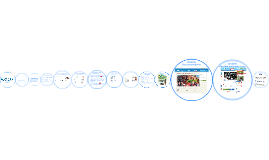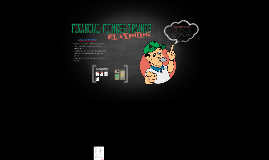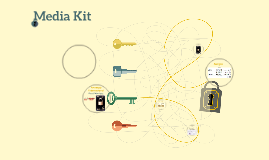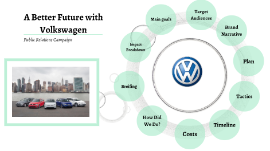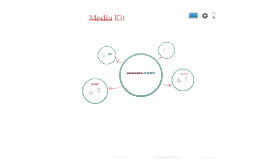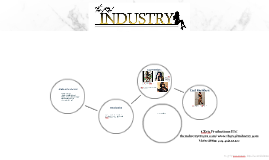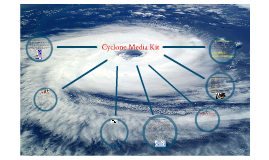Media kit
Transcript: Cyclone Media Kit Introduction 1. Cyclones rotate counter-clockwise over the northern hemisphere, but clockwise over the southern hemisphere. 2. They come in a variety of sizes, from tens of feet in diameter to thousands of miles across. 3. There tend to be more cyclones than anticyclones. 4. Cyclones occur in the lower atmosphere as well as the upper atmosphere. 5. There are different types of cyclones, such as tropical and mid-latitude cyclones. 6. Some cyclones are warm core, while others are cold core types. 7. Cyclones have various life spans from just a few minutes to many days and weeks. 8. Tornadoes and hurricanes are two types of cyclones, amongst others. 9. Cyclones are the result of winds that interact with the Coriolis force. - What is a cyclone? Cyclones are huge revolving storms caused by winds blowing around a central area of low atmospheric pressure. In the northern hemisphere, cyclones are called hurricanes or typhoons and their winds blow in an anti-clockwise circle. In the southern hemisphere, these tropical storms are known as cyclones, whose winds blow in a clockwise circle. - Where have cyclones hit in the past? Severe Tropical Cyclone Yasi - 30 January - 3 February 2011 Tropical Cyclone Anthony 22 - 31 January 2011 Severe Tropical Cyclone Zelia- 14 - 18 January 2011 Tropical Cyclone Robyn- 1 - 7 April 2010 Tropical Cyclone Paul- 22 March-3 April 2010 Tropical Cyclone Sean- April 2010 Severe Tropical Cyclone Ului 8 - 21 March 2010 Tropical Cyclone Olga 19 - 30 January 2010 Severe Tropical Cyclone Magda 19 - 24 January 2010 Tropical Cyclone Neville 14 - 23 January 2010 Severe Tropical Cyclone Laurence 8 - 23 December 2009 Severe Tropical Cyclone Ilsa 17 - 24 March 2009 Severe Tropical Cyclone Hamish 4 - 11 March 2009 Tropical Low Gabrielle 28 February - 6 March 2009 Severe Tropical Cyclone Freddy 3 - 13 February 2009 Tropical Cyclone Ellie 31 January - 2 February 2009 Tropical Cyclone Dominic 24 - 27 January 2009 Tropical Cyclone Charlotte 11 - 12 January 2009 Severe Tropical Cyclone Billy 15 December 2008 - 5 January 2009 AND MANY MORE! - Can humans start cyclones? Just like all natural disasters cyclones can be started by humans - How are cyclones formed? Cyclones develop over warm seas near the Equator. Air heated by the sun rises very swiftly, which creates areas of very low pressure. As the warm air rises, it becomes loaded with moisture which condenses into massive thunderclouds. Cool air rushes in to fill the void that is left, but because of the constant turning of the Earth on its axis, the air is bent inwards and then spirals upwards with great force. The swirling winds rotate faster and faster, forming a huge circle which can be up to 2,000 km across. - Why is a cyclone called a cyclone? Cyclones are called cyclones because they are defined by the meteorological centers in advance. The names are chosen based on the alphabet, starting from A to Z www.btc.cdc.gov/prepardeness or www.btc.gov/natural disasters Also, plan it now.org/all about cyclones and library.thinkquest.org/10136/cyclones/cycltq.htm www.btc.cdc.gov/prepardeness or www.btc.gov/natural disasters Also, plan it now.org/all about cyclones and library.thinkquest.org/10136/cyclones/cycltq.htm __________________________ Thousands, even millions of people have died from cyclones. People all around the world have been severely injured and even killed by cyclones. This is a issue that has effected the world greatly. Scientist and other types of people that study disasters have came to a conclusion that it is not possible to prevent a natural disaster, but it is possible to create a survival kit/media kit to ensure that people survive the cyclone. Based on the the fact that people have survived a cyclone, but have died because they did not have the resources to live with the aftermath, we have created a survival kit/media kit to help the population that have been greatly affected by a cyclone by preparing a kit with materials to live with the after math of a cyclone. Cyclones are a serious, dangerous natural disasters that kill up to thousands of people per year. People are lucky to survive the initial cyclone, but when they survive they do not have the supplies to survive the aftermath and eventually die because they do not have the resources to live with the aftermath. That is why we have created the survival kit/media kit to help people survive the terrible aftermath and prepare for the devastating cyclone. Public Service announcement Frequently asked questions For more information go to... December 15, 2012 For immediate release Being in an area where a cyclone is expected to hit is just a complete disaster. Cyclones have caused thousands, even millions of people to lose there life's, properties, family pets and etc. What if we had just the solution to your cyclone problems. We have created a Survival kit/ Media kit to help you to survive a cyclone. The cyclone media kit/ survival kit has been developed from years of






